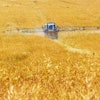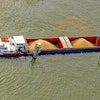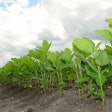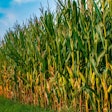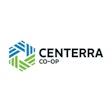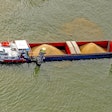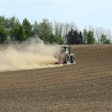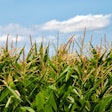
Increasing control measures in preharvest could be what helps the poultry industry take its Salmonella control to the next level.
With poultry production volumes ever increasing keeping human Salmonella cases down is crucial, so the industry must work together to look for new strategies to combat the pathogen.
Industry experts sat down at the “Poultry Future: What’s next for Salmonella control in broilers and turkeys?” panel at the 2025 International Production & Processing Expo (IPPE) to discuss what a multi-faceted approach to reducing Salmonella should look like.
Panelists included:
- Kalen Cookson, DVM, MAM, DACPV, director of clinical research, Zoetis
- Elizabeth Krushinskie, DVM, Ph.D., senior technical advisor, owner, Food Safety Risk Management Consulting
- Arjun Ganesan, CEO, Ancera
- Bill Potter, Ph.D., food safety and processing extension specialist, University of Arkansas
Collaboration is key
It will take effort from every member of the poultry supply chain to see Salmonella cases continue to decline.

“We’re at a point of kind of diminishing returns in processing,” said Potter. “It really is truly a breeder, hatchery, broiler farm, turkey farm, integrator, veterinarian, nutritionist, food safety leader, processing plant manager, operations VP, even up to executive level shared role to maintain Salmonella reduction.”
“In Salmonella monitoring, there’s valuable information in analyzing quantitative Salmonella data. By periodically using quantitative data in combination with serotype analysis, it provides a great picture of the Salmonella status at a complex,” he added. “This drives modifications to improvements at preharvest such as vaccination optimization, control of darkling beetles and using effective feed additives such as prebiotics and postbiotics as needed.”
Targeted testing and monitoring
Before producers can reduce Salmonella, they need to know exactly what they are fighting, which is where periodic testing can be helpful.
One of the most common tests is rapid screening that searches for the quantitative loads of Salmonella using DNA amplification.
Typical DNA amplification tests can be conducted using loop-mediated isothermal amplification (LAMP) or a polymerase chain reaction (PCR) test, which uses multi-temperature thermocycling in the presence of primers and a polymerase. A microbiological test can then be used to confirm the presence of Salmonella, according to Potter.
Knowing the exact serotypes of Salmonella present is also crucial in successful Salmonella management.
Newer next generation sequencing or whole genome sequencing methods can be used to identify serotypes from a sample which, opposed to more traditional tests, are quicker and reveal multiple serotypes in a sample, not just the most prevalent strain. This is important because sometimes the most prevalent Salmonella serotypes commonly seen in preharvest do not necessarily match with the serotypes seen after processing.

Accurate testing makes for a more effective intervention strategy – a sniper attack vs. a sledgehammer, said Ganesan.
Stop Salmonella at the source
Panelists specifically highlighted the role of breeders in controlling Salmonella since it is the first step in the supply chain, and pullets are more immunocompromised in the first week of life.

Quoting former undersecretary for food safety Richard Raymond, Krushinskie said, “if you have people falling in the river upstream of a waterfall, it doesn’t make much sense to focus on pulling them out at the bottom, right? The whole idea is to keep them from falling in the first place.”
Krushinskie also suggested depopulating infected pullet flocks similar to approaches used in other countries.
“Limiting the amount of infection that those broilers go through
Vaccination
But exposure to Salmonella is inevitable, said Cookson, so any prevention strategies must be paired with vaccination.
“There’s only one preventative strategy that builds the immunity specific to Salmonella within the bird and can start from the first day that they’re hatched out, and that’s vaccination,” said Cookson.
When it comes to choosing a vaccine, there is no one-size-fits-all solution since vaccines are designed to target specific serotypes and have varying modes of action, for example, some vaccines live in the body for an extended period while others are much more short-lived, according to Potter.
Potter suggests producers consult with poultry veterinarians or scientists when choosing a vaccine or combination of vaccines to make sure their birds receive the most accurate treatment.
Until more vaccines are developed to treat different serotypes, using a combination of vaccines is a good way get more out of the products that are currently available, Cookson added.
“So, what we’ve done is actually looked at combining live vaccine, actually mixing it with the killed SE bacterin, and we’re seeing a much greater immune response to the live vaccine,” said Cookson.
Live vaccines are administered to birds early in life to stimulate the immune system while killed vaccines are used later in life to induce long-term immunity and help create antibodies. Researchers are looking into how combining the two could see increased immunity and antibody production and reduce Salmonella colonization and shedding, said Potter.
Intestinal health, litter control and stress
Prevention strategies that boost intestinal health can help vaccination be that much more effective against Salmonella. For instance, finding the right feed withdrawal window at pre-harvest can protect the birds’ intestinal integrity, maintaining their resistance to Salmonella.
“When there’s excessive feed withdrawal, the intestinal tract becomes very thin and friable and breaks easily, and that has already been correlated with increased Salmonella contamination of the product,” said Krushinskie.
Limiting stress in birds can also help reduce Salmonella, as high stress levels can cause Salmonella to overgrow in a bird’s system and shed onto other birds, Krushinskie added.
To protect intestinal health during the withdrawal time immediately before processing, Krushinskie recommended treating or acidifying the birds’ drinking water in addition to incorporating feed additives that improve the health of the gut microbiome.
Gut control goes hand-in-hand with litter control, according to Cookson.
“If you have leaky gut, you’re going to have wetter litter,” said Cookson. “Wet litter is going to be more conducive to bacterial blooms that then the bird will pick back up fecal oral, so it all plays together.”
